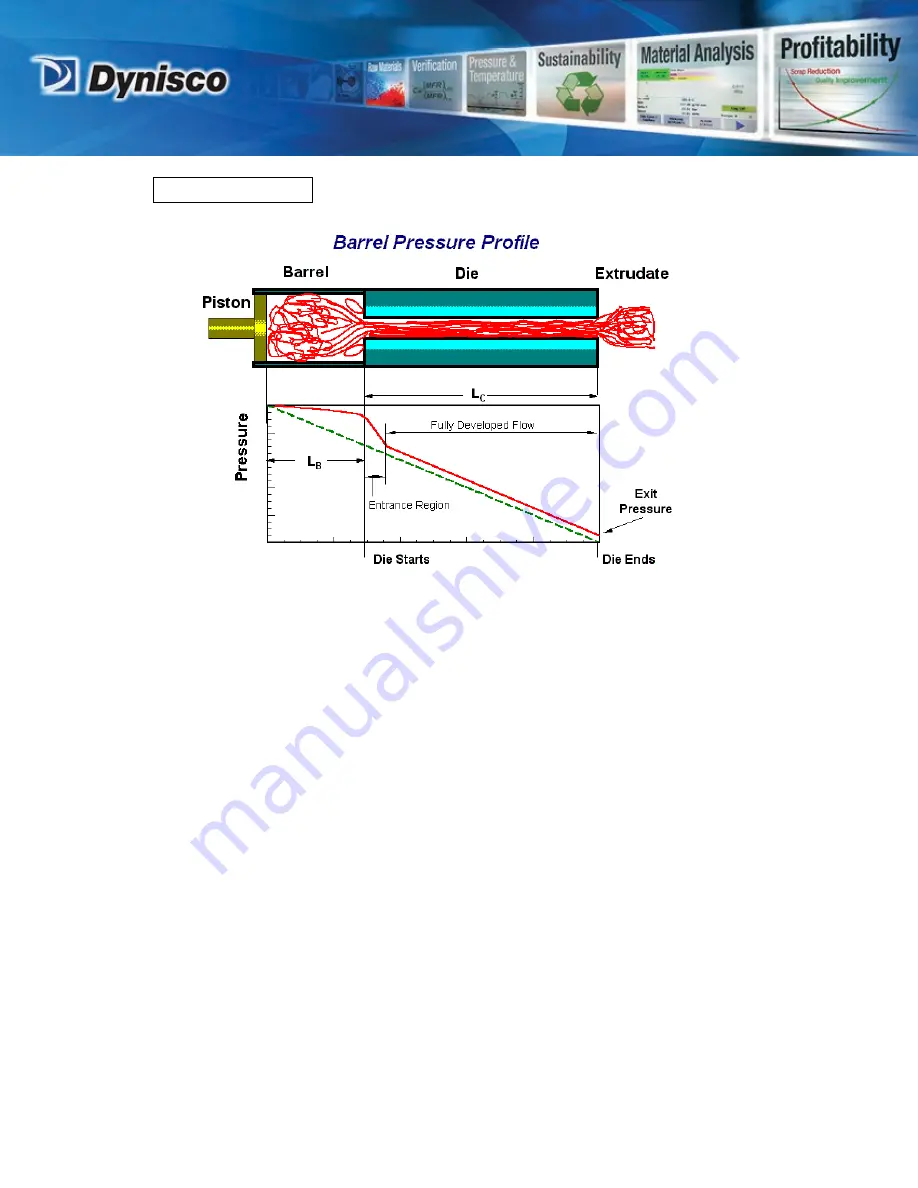
LCR7000 & RHEOSIGHTS P/N: 974194 |
Rev: A
|
ECO: 52468
www.dynisco.com
From lab to production,
providing a window into the process
-66-
In the above diagram of the pressure vs. position it can be seen that, within the die the
pressure falls steeply as the exit is approached. Even within the barrel there is a small
pressure drop, known as the barrel pressure drop or barrel drag effect. Close to the die
entrance and just inside the die the pressure drop is quite steep as we force the material to
undergo a primarily extensional deformation to enter the die. Once past the entrance
region the pressure falls in a linear fashion as a result of the shearing action within the die.
(Note that the exit pressure is typically non-zero.) All of these pressure effects, the barrel
pressure drop, the entrance pressure drop, frictional effects and the exit pressure are all
part of the total pressure in addition to the pressure drop in the die. In the previous
equations we assumed that we were only measuring the pressure drop in the die. If we use
this assumption, we over-estimate the viscosity because of the extra pressures in the
system. We can correct for this by using several dies of the same diameter but differing
lengths and measuring the plunger force for a given shear rate at the same point in the
barrel for each die. These data are plotted as pressure verses the L/D of the dies for a series
of different shear rates and the lines extrapolated to L/D=0. The pressure at this point
represents the extraneous pressures, which can be subtracted so the true viscosity can be
calculated. (See the section Corrected Shear Stress.)
9.
Pressure Profile















































